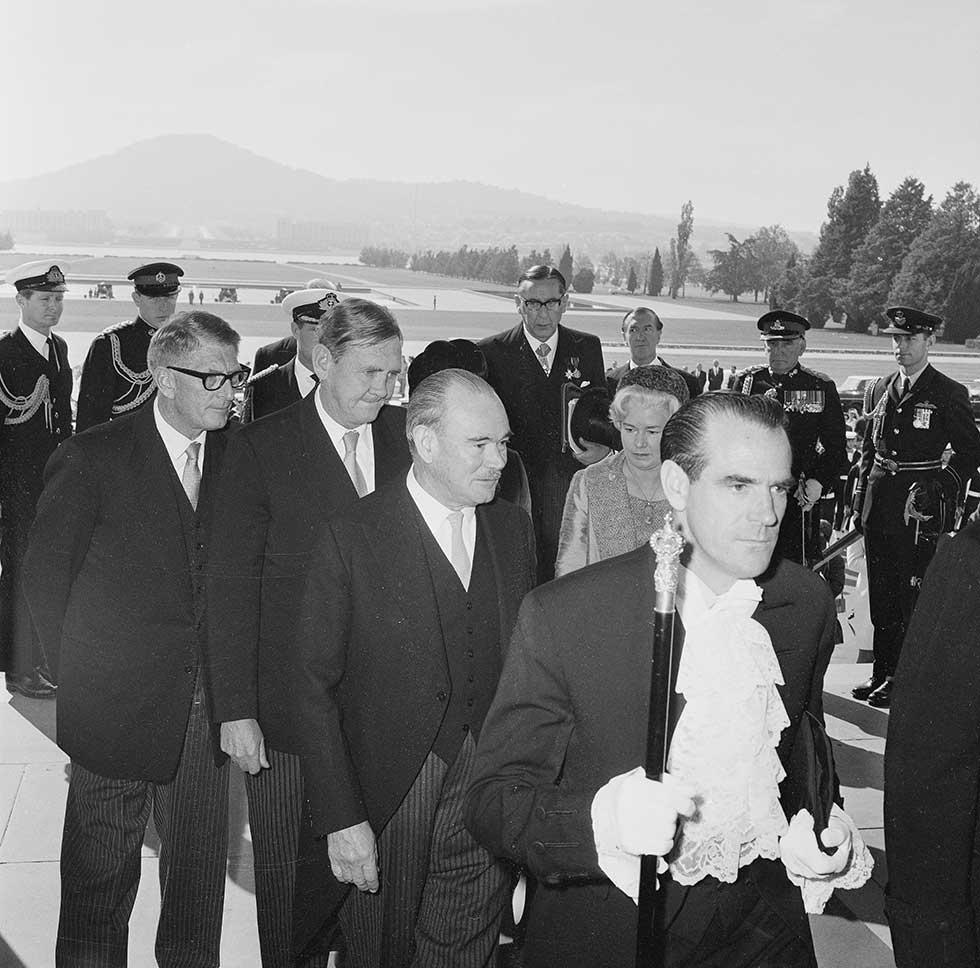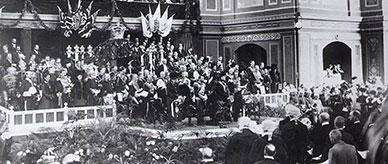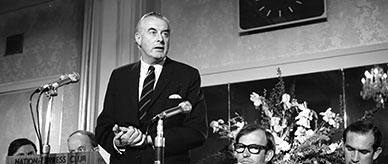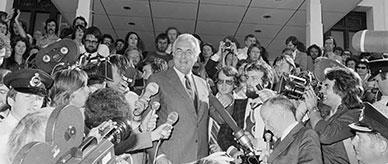


About this record
This is a black-and-white photograph showing the official government party about to enter (Old) Parliament House in Canberra for the swearing in of Paul Hasluck as Governor-General in 1969. The photograph shows the Usher of the Black Rod leading the official party, including Sir Paul Hasluck (immediately behind the Usher), Prime Minister John Gorton (behind Hasluck) and Gorton's wife, Bettina Gorton. They are watched by military personnel standing to attention. Mount Ainslie and Lake Burley Griffin can be seen in the background.
Educational value
- Sir Paul Hasluck (1905–93) is seen here approaching (Old) Parliament House with John Gorton, who offered him the post of governor-general after defeating him in the contest for the Liberal Party leadership, and therefore for the position of prime minister. When Harold Holt died in 1967, Hasluck had contested the leadership but Gorton was chosen instead. Hasluck, who Gorton saw as a rival, resigned from parliament in February 1969 to take up the appointment as Governor-General.
- After his appointment, Hasluck served as Governor-General during the eventful prime ministerships of John Gorton, William McMahon and Gough Whitlam. He declined Whitlam's offer to remain as Governor-General at the end of his term in 1974 and was replaced by Whitlam's appointee, Sir John Kerr, who went on to dismiss Whitlam in 1975.
- As minister for territories from 1951 to 1963, Hasluck had developed and implemented the federal government's 'assimilation' policy for Indigenous Australians in the Northern Territory. Since he was young he had believed in the capacity of Indigenous people to be equal to Europeans and he regarded the assimilation policy as enlightened, but he failed to understand the importance of cultural identity or the disastrous effects of assimilation, especially the forced removal of children from their parents.
- As minister for territories Hasluck had believed that Papua New Guinea, for which he had responsibility, was not yet ready for independence, but under pressure from the United Nations he worked to prepare the territory for this eventuality. He improved education and health provision, sought to develop a bureaucracy sympathetic to Papuans and made improvements to transportation in preparation for self-rule.
- A former historian, poet and journalist, Paul Hasluck entered politics in 1949 as a member of the Liberal Party, and in 1951 was appointed Minister for Territories. He served in this post for 12 years before serving as Minister for Defence in 1963–64 and then Minister for External Affairs. He was Governor-General from 1969 to 1974.
- The photograph shows the pomp and ceremony involved in the official swearing in of a new governor-general, and reflects the Westminster traditions on which the Australian parliamentary system is based. As a constitutional monarchy, Australia's head of state is the monarch of Britain, represented in Australia by the governor-general. The Usher of the Black Rod is a parliamentary official who carries the Black Rod, a symbol of parliamentary debate.
Acknowledgments
Learning resource text © Education Services Australia Limited and the National Archives of Australia 2010.
Related themes
Need help with your research?
Learn how to interpret primary sources, use our collection and more.



